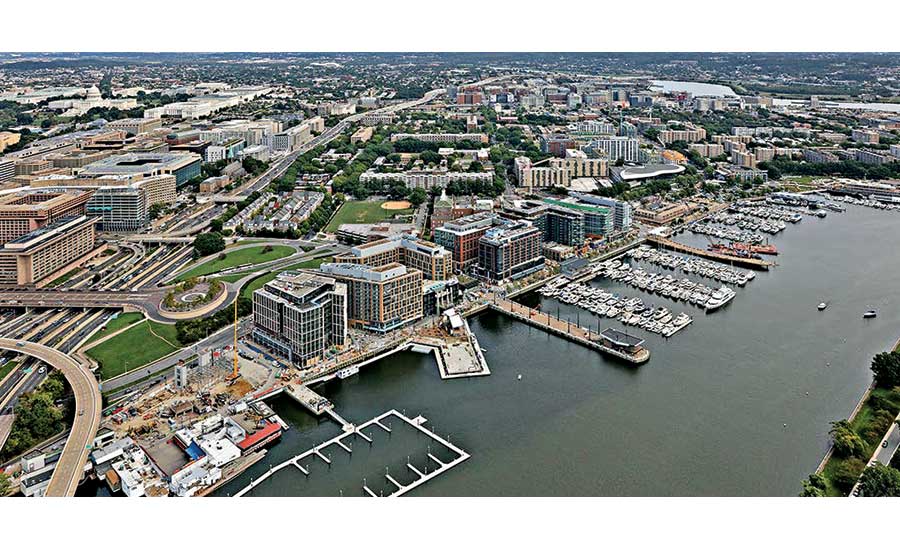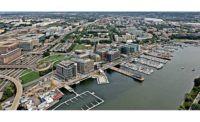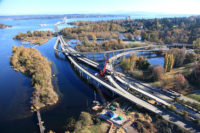Clark Construction Group has filed a professional negligence and breach of contract lawsuit against the Washington, D.C., office of architect Perkins Eastman, related to its first-phase design of The Wharf, a mixed-use project on the District of Columbia’s southwest waterfront.
In the suit, filed March 9 in U.S. District Court for the District of Columbia, the contractor seeks at least $5 million but says the damage amount would likely grow if a trial proceeds.
Clark had a fixed-price design-build contract with The Wharf developer PN Hoffman and Madison Marquette for the project’s estimated $1.2-billion, 1.4-million-sq-ft first phase. The Clark contract was $457 million, the firm says. That phase of the development, which opened last October, includes a music hall, jetty terminal, apartments, office space and restaurants.
Perkins Eastman also serves as the overall project’s master planner and master architect, including for a planned second phase that now is seeking approvals and could break ground this year.
A contractor has not been selected for it, says a spokeswoman for Madison Marquette. The entire project is estimated at 3.2 million sq ft. and up to $2.5 billion in value.
Finding Faults
Clark relied on Perkins Eastman design documents to estimate the cost of the work and create an efficient and productive sequence for construction, the complaint says.
“Those representations were not accurate or true,” the complaint says, also claiming the contractor had mounting evidence leading it to know the work was “negligent.” Clark would not answer questions related to complaint allegations, saying it does not comment on ongoing litigation.
The contractor ranks No. 12 on ENR’s latest Top 400 Contractors list with nearly $5 billion in reported 2016 revenue. Perkins Eastman, ranked No. 68 on ENR’s latest Top 500 Design Firms list with $215 million in 2016 revenue. ,
Sitework began in October 2014 with construction underway the following summer. Clark says it incurred significant damages as a result of errors and omissions by Perkins Eastman that were only discovered during construction.
Structural columns did not accommodate the architectural layouts and conflicted with other building components. Concrete beam designs contained errors that did not allow code-required clearances, and built-up slab designs contained errors and omissions that required engineering and construction modifications, the complaint says.
There were similar issues in design of structural beams, and errors and omissions found in structural rebar, foundation piles, stairs, loading docks and curtain walls, the suit contends.
Original pier embeds and surrounding concrete and finishings had to be removed to install corrected embeds, says Clark. Acoustical design of the theater and concert hall also contained errors, so that performance was not within acceptable tolerances, says the complaint. Errors and omissions could not have been discovered prior to construction and were not known until later, with potential for others to surface, the complaint says.
Perkins Eastman further breached design agreements by refusing or ignoring offers for contractual alternative dispute resolution, including dispute mediation, the suit says. The designer, which also did not comment, had not responded to the complaint by ENR’s April 2 print deadline. It has until April 4 to do so.





Post a comment to this article
Report Abusive Comment